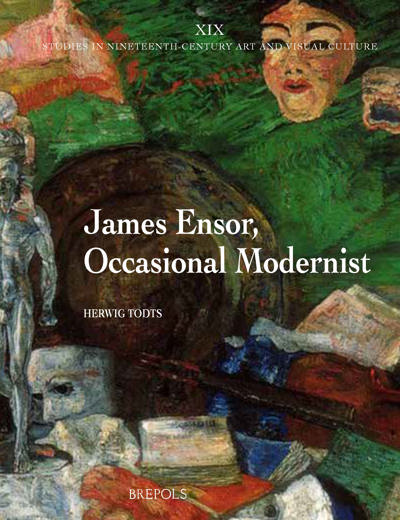
James Ensor, Occasional Modernist
Ensor’s Artistic and Social Ideas and the Interpretation of his Art
Herwig Todts
- Pages: 448 p.
- Size:216 x 280 mm
- Illustrations:13 b/w, 166 col.
- Language(s):English, French
- Publication Year:2019
- € 89,63 EXCL. VAT RETAIL PRICE
- ISBN: 978-2-503-57030-3
- Hardback
- Available
This book explores James Ensor’s writings, ideas and works in greater depth than they have hitherto enjoyed in art-historical scholarship.
Herwig Todts is senior curator of modern art at the Royal Museum of Fine Arts in Antwerp and directs the Ensor Research Project.
In the course of the twentieth century, under the influence of the increasing success of Modernism, a misleading image of James Ensor emerged. One might even say that Ensor was confined within a modernist ‘straitjacket’. In order to understand the artist’s motivations, this book follows the advice given to the art critic André De Ridder by Ensor himself in 1930: ‘I recommend you re-read Les Écrits de James Ensor, where I explain my research and defend my ideas’. Ensor’s writings can roughly be divided into two categories – his letters and ‘les écrits’, encompassing his journalistic work, satirical exhibition reviews, comical speeches, words of thanks and praise, and open letters in brochures.
The analysis of Ensor’s writings is no small task, for he gave little attention to structure and coherence, and employed a complex ‘wondermiraclelikefulistic’ language – archaisms, neologisms, staggering vitriolic rants, hyperboles, from which the essence of his personal views and beliefs is often difficult to distill. Nevertheless, his writings are a crucial source of knowledge on his opinions on Christian faith, rationality, hypocrisy, the dangers of an emerging Flemish nationalism, animal cruelty, the destruction of natural beauty and ancient monuments, and a number of other topics. Ensor believed art ought to be a source of ‘ravishment’ for both the viewer and the artist, and continually defended the right of the latter to create an incoherent oeuvre, experimenting with ever new and diverse ‘manières’, styles, subjects, techniques and genres. This book explores the artist’s writings, ideas and works in greater depth than they have hitherto enjoyed in art-historical scholarship.
Preface (and a few preliminary remarks)
Introduction
Chapter 1: The artistic agenda of Les XX and the earliest reception of Ensor’s work
Chapter 2: Eugène Demolder about Ensor (1892)
Chapter 3: La Plume (1898), an ‘authorized’ interpretation of Ensor’s art?
Chapter 4: Canonization and interpretation of Ensor’s art (1905-1949 and 1951-2012)
Chapter 5: Modern, modernism, modernity and innovation
Chapter 6: The general character of Ensor’s writings
Chapter 7: Ensor’s ideological beliefs
Chapter 8: Social Criticism
Chapter 9: Ensor’s artistic views
Chapter 10: An experimental attitude, a conceptual method, a plurality of projects
Chapter 11: A selection of 19 artistic projects
Conclusion: An Occasional Modernist
Sources
Apendix: Ensors “canon”. An overview of positive and negative appreciation of artists of yesteryear and contemporaries, in Ensor’s writings and letters.
Index




